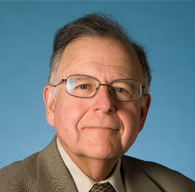
As infrastructure talks heat up in Washington, some Bay Area advocates are wondering if there will be money to tear down the 980 Freeway, which bisects downtown Oakland from West Oakland. Joining us to discuss tonight on State of the Bay are Nico Savidge, reporter, East Bay Times & Chris Sensenig, founder, Connect Oakland.
Also, no one knows San Francisco better than historian and San Francisco Chronicle contributor Gary Kamiya. We’ll talk to him about his book “Spirits of San Francisco” and the anthology “End of the Golden Gate,” which he edited. He’ll tell us why he’s vowed to never leave San Francisco.
And finally poet Giovanna Lomanto reads her poem “Gold Digger” and talks about her process.
Tune in tonight at 6pm PT on KALW 91.7 FM in the San Francisco Bay Area or stream live. Call 866-798-TALK with questions during the show!

On tonight’s State of the Bay, we’ll dive into the push to end single-family zoning restrictions in Berkeley with Vice-Mayor Lori Droste and UC Berkeley’s Stephen Menendian.
We’ll also talk with Magnus Lofstrom of the Public Policy Institute of California about rising crime rates in the Bay Area. And then Grace Won chats with local author Vendela Vida about her new novel, We Run the Tides, which explores the rocky terrain of teenage friendships, particularly among girls.
And as a bonus, I’ll be on Your Call on KALW 91.7 FM at 10am PT discussing electric vehicles and the Biden infrastructure package!
Tune in today at 10am PT for Your Call and at 6pm PT for State of the Bay or stream live, both on KALW 91.7 FM in the San Francisco Bay Area. Call 866-798-TALK with questions during the show!
Dr. Martin Wachs, who passed away Sunday evening, was California’s preeminent transportation scholar. He knew both Northern and Southern California well, having joined UCLA’s urban planning department in 1971 and founded its Institute of Transportation Studies, while also spending a decade at UC Berkeley in the interim, where he chaired that’s schools transportation studies program. Much of our knowledge about the history of the state’s transportation system and our ability to evaluate its efficacy comes from his prolific scholarship and role as a public commenter on major transportation decisions.
But more than that, he was a humble and generous person with boundless curiosity and intellect. I first met him when I was researching the history of the Los Angeles Metro Rail system, back in 2007. His influence on Los Angeles transit debates was all over the archival and media documents I found from the 1970s and 1980s, from his scholarship to his op-eds to his conference appearances. Los Angeles elected leaders took his research seriously, even if they didn’t like his skepticism about rail transit in a city as spread out as Los Angeles.
I had originally approached the book as a rail enthusiast, and when I met him in his then-RAND office a few blocks from my Santa Monica apartment, he seemed aghast that I would set out to write a book that would promote rail. But he nonetheless provided me with contact information for a former student who had researched Metro Rail history, along with a few large binders of research for my files. I thanked him profusely and relied on his research for much of the discussion in the book on L.A.’s rail history. In fact, much of what we know about the demise of the Pacific Electric streetcar system in Southern California and its myth-busting conclusion that it was not a car company conspiracy is due to his groundbreaking research.
When my book Railtown was finally published seven years later in 2014, Marty was invited to co-present with me on its findings at an event at UC Berkeley. Top faculty at the school lined up to greet him, like fans seeking autographs at a celebrity book signing. It was an impressive indication of his impact and role as a longtime mentor and generous colleague to so many of them. He was like a returning rock star in his field.
While I was a bit worried how he would react to the book, his comments that evening were thoughtful and ultimately complimentary. I chronicled them at the time on this blog. They are worth reading for anyone interested in his take on rail. What stood out to me was his comment that the book showed him how little politicians actually heeded the advice of transportation scholars, as they forged a path for rail investments despite the caution of experts. And as a recent member of the high speed rail peer advisory group, he was finding a similar dynamic at play, with politicians making short-sighted decisions on this crucial California infrastructure project that have come back to haunt and potentially torpedo its progress.
After that evening in 2014, we kept in touch, even co-authoring an article series on the pros and cons of rail transit investments. If I ever had any questions or needed advice or resources, Marty would jump at the chance, providing thoughtful responses, lists of resources to review, and people to contact. Hundreds of others could say the same thing — his legions of former students now working on urban planning issues, his colleagues, and countless leaders and readers who have benefited from his scholarship and thinking on these complicated issues. You can read some of their tributes (and find out how to honor his memory) on this UCLA website.
Just a few months ago I contacted him about a new rail transit study we’re conducting at UC Berkeley Law. Typical Marty, he immediately offered to schedule a Zoom with our team, providing invaluable advice. But what I remember now is his initial email back to me, where he reflected on his life during the pandemic times. Like most of us, he was home-bound, and he missed his children and grandkids. But he was enjoying his work (including a manuscript in progress that I hope will be finished somehow) and took solace in his garden.
I pictured him in the warm Southern California sun tending to his plants and wonder now who will care for them with his absence? It’s just a small example of the giant hole his death leaves in our world. But Marty’s amazing legacy — beyond the scholarship and influence on public debates — includes his many former students, colleagues, and friends. He trained and supported so many well, who can do their best now to carry on the work he advanced, on issues that affect so many people’s daily lives.
Rest in peace, Marty, and thank you.

One of the largest Black-owned real estate companies in the country is working with residents of a co-op in San Francisco’s Fillmore neighborhood to redevelop the current sub-standard homes into a $2 billion mega-project of market-rate and affordable housing, plus an innovation center to spur local jobs. Come hear the story from the developers and community leaders themselves at a free lunch ‘n ‘learn webinar at noon PT on Wednesday, April 7th, which I’ll be moderating.
The $2 billion project will transform the Fillmore District and potentially provide a community-based model for housing redevelopment around the country. Rather than being displaced, the current, predominantly African American co-op residents will be able to move into a new eight-story apartment building at no additional cost. The residents will then receive a 15% profit share in the new market-rate units, which include new buildings rising 12 and 18 stories, as the San Francisco Chronicle reported last year.
The webinar will feature:
- Victor McFarlane, chairman and CEO of MacFarlane Partners
- Mattie Scott, President of the Freedom West board of Directors
- Landon Taylor, Co-founder of Legacy First Partners and lead advisor to Freedom West Homes Corp.
The event is organized by the Council of Infill Builders and sponsored by Allen Matkins. Register here!
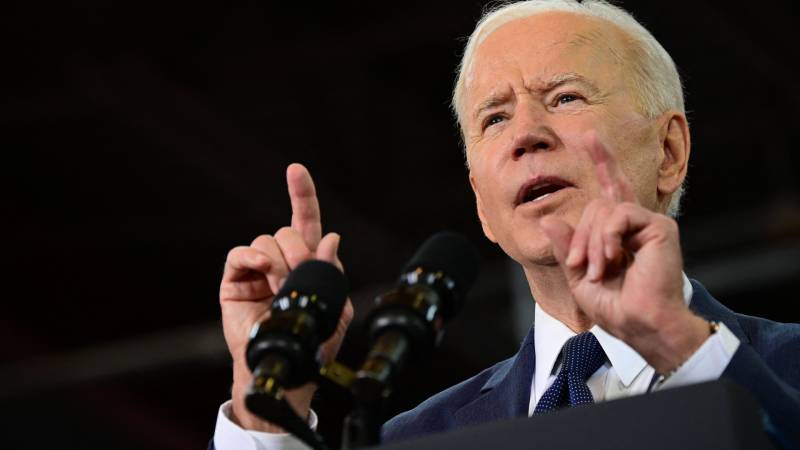
President Biden yesterday unveiled his “infrastructure” plan, but it’s really his best and greatest shot to address climate change. I’ll be speaking about the plan and what it means for the climate at 10:20am PT on KQED’s Forum. You can also hear my thoughts on the electric vehicle charging aspect of the plan on yesterday’s NPR Marketplace.
The proposal calls for transformational investments in rail, bridges, and road repair, along with a decarbonized electricity grid, incentives for electric vehicles, an end to fossil fuel subsidies, and home energy retrofits, among other goals. The plan even seeks to end single-family zoning.
Tune in this morning to hear more!
Co-authored by Ted Lamm and Katie Segal and cross-posted on Legal Planet.
How would you spend $25 million to reduce the risk of catastrophic wildfire through vegetation management? Sonoma County leaders found themselves facing this question and enlisted UC Berkeley School of Law’s Center for Law, Energy and the Environment (CLEE) for help. Today, CLEE is releasing a report with specific recommendations for Sonoma County, which we hope can serve as a model for other local and state governments and community groups as they work to address the increasing risk from wildfires.
Where did Sonoma County get this funding? In 2017, 2019, and 2020, wildfires ravaged the county, burning approximately one-third of the total land area, destroying thousands of structures, and taking dozens of lives. In the aftermath of the 2017 fires, several California governments (including Sonoma County agencies) sued Pacific Gas & Electric (PG&E)—the electric and gas utility—based on evidence that the company’s electrical equipment played a role in igniting the fires. In 2020, PG&E and Sonoma County reached a $149 million settlement, with the expectation that funds will be allocated towards a variety of wildfire recovery and prevention activities. The Sonoma County Board of Supervisors ultimately directed at least $25 million of the total $149 million towards vegetation management efforts.
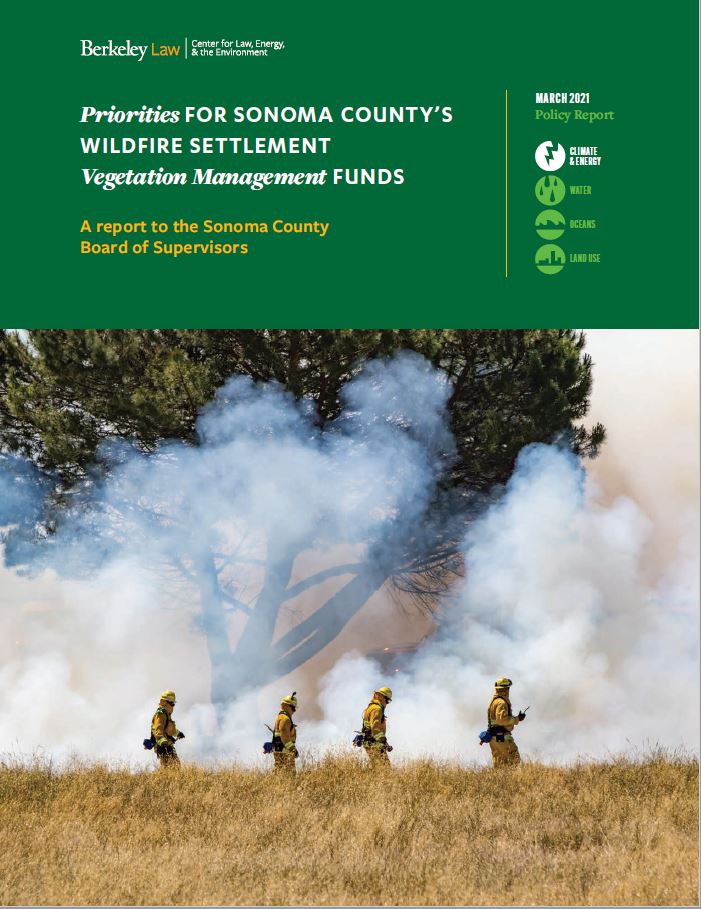
County leaders engaged CLEE to deliver recommendations on how to spend the dollars effectively. Through two expert convenings and stakeholder outreach, CLEE gathered input from leaders in wildfire science, public finance, planning, and vegetation management, among other areas of expertise. One of the convenings focused entirely on local experts, leveraging the wealth of knowledge within Sonoma County and learning from local organizations’ experiences. The other convening included state-level experts who could speak to broader experiences and priorities throughout California.
Both groups’ priorities and insights led to several key recommendations to guide vegetation management spending in Sonoma County. Driving most of these was the fact that a limited pool of near-term funds cannot adequately address the County’s long-term, recurring vegetation management needs; thus, leaders should invest in financing mechanisms, workforce development, and community outreach efforts that can generate new funds and incentivize private action. That said, a portion of funds – approximately one third – should be directed toward the highest-priority actions that can be taken in advance of coming fire seasons, to help reduce near-term risk and accelerate existing initiatives. And, to support effective and efficient long-term investments, the County should create a vegetation management governance capacity. Ultimately, $25 million is insufficient to cover the scale of the need. But it can help jumpstart demonstration projects, fund immediate needs, and leverage additional funds. The key recommendations and principles to guide vegetation management in Sonoma County include:
- Funding immediate vegetation management activities, especially in high-risk and high-priority areas and near key ecosystems. Initial activities should consider specific project zones (such as densely populated areas or areas that burned in recent fires), as well as project types (such as defensible space near buildings or understory thinning in forested areas).
- Centralizing stakeholder coordination and governance to improve efficiency and ensure that the right projects are funded as quickly as possible, especially early action projects before the upcoming fire season.
- Prioritizing equity, community outreach, and education so that all communities benefit from and understand their role in vegetation management actions. Understanding different stakeholders’ needs and keeping open lines of communication will be crucial components of successful vegetation management and are also cost-effective methods of scaling up projects.
- Maintaining relevant and up-to-date data sources for planning and evaluation, so that various analytical efforts and interactive tools draw from the most recent information. Monitoring and evaluation are also critical to tracking vegetation management projects’ impact and scope over time, allowing project managers to adjust implementation as needed.
- Leveraging long-term financial sustainability, so that funds are replenished and Sonoma County can transform the initial $25 million allocation into a much larger, continually renewing source for ongoing vegetation management activities. Options include a revolving fund, financing districts, resilience bonds, new local sales or parcel tax revenue, and leveraging federal and state dollars, among other options.
- Building the local workforce will help Sonoma County tackle both short- and long-term vegetation management needs while creating high-quality local jobs. Workforce development options include a multi-year training program, partnerships with local conservation corps and educational institutions, apprenticeship programs, and labor share programs, among several other options.
Participants also developed a set of principles to guide County vegetation management decisions, including:
- Prioritizing vulnerable communities (including lower-income residents, elders, renters, communities of color, and those most affected by air quality impacts), along with critical infrastructure and special assets
- Incorporating and supporting robust public outreach, engagement, and education at every step
- Accomplishing multiple forest and ecosystem health objectives by performing and monitoring high-quality, science-based treatments
- Recognizing effective vegetation management requires continuous, dedicated implementation in an adaptive management framework
- Leveraging by seeking other funding opportunities and creating sustainable funding mechanisms
While every California county—and indeed every wildfire-prone region in the world—has different circumstances and resources, these ideas could help inform vegetation management conversations beyond Sonoma County’s borders. Wildfires are part of natural systems, but development expanding into wildland areas and hotter, drier conditions caused by climate change increase the likelihood and severity of fire across the state. These worsening conditions, combined with decades of fire suppression, position California for a future of more catastrophic wildfires unless there is a dedicated, coordinated, and locally tailored vegetation management effort to address risks facing forests, ecosystems, and communities.
We hope this report will help Sonoma County and leaders across California take immediate action to mitigate risks during the upcoming fire season and implement a long-term strategy to reduce the severity of wildfires in the years to come.
You can download the report here.
We will be presenting the report findings at the virtual Sonoma County Board of Supervisors meeting today (Tuesday), March 23, 2021, which starts at 8:30 am Pacific Time. You can access the agenda here, which includes Zoom login information, to listen in or offer your own comments.
If you’re interested in the past, present and future of rail transit in Los Angeles, check out the video above from my talk this week with Streets For All. My moderated comments begin about 20 minutes in. We covered everything from the dismantling of the Los Angeles streetcar network to delays building current rail lines to whether anyone alive today will ever get to ride high speed rail.
And if you don’t know Streets For All, they’re a volunteer-based organization advocating for equitable redesign of streets and the transportation network to favor transit, walking and biking, as a climate change and quality-of-life necessity in Los Angeles.
Consider becoming a member if you’re interested in these issues. I thank them for hosting me for this talk!
With the presidential election over, Joe Biden faces a U.S. Senate that still hangs in the balance. But even with a Democratic runoff sweep in Georgia next month, it will be very divided. So what will be possible for a President Biden and his administration to achieve on climate change?
Agency action, foreign policy changes, and spending can all make a difference on emissions, with any COVID stimulus and budget deals with Congress, if feasible, providing potential avenues for further climate action. Here are some ideas along those lines, broken out by key sectors of the economy.
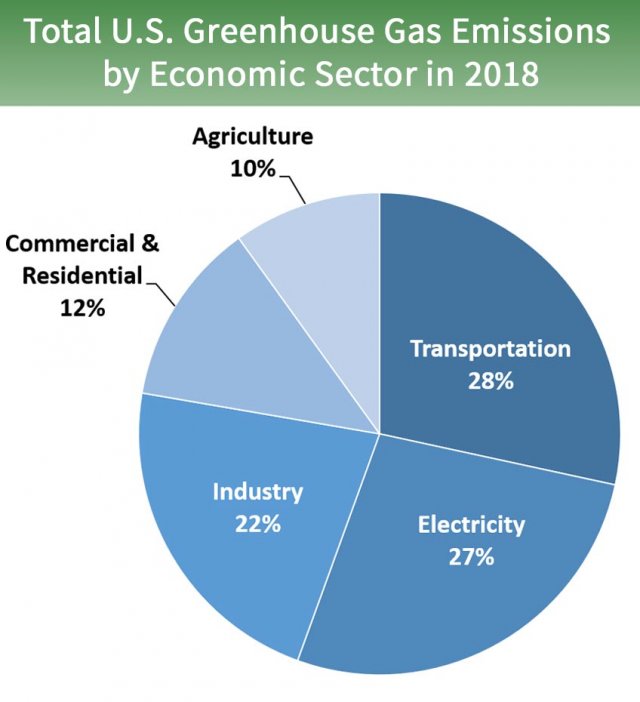
Action on Transportation
As the EPA chart above of 2018 emissions shows, transportation contributes the largest share of nationwide greenhouse gas emissions at 28%. The best way to reduce those emissions is to decrease per capita driving miles through boosting transit and the construction of housing near it, as well as switch to zero-emission vehicles, primarily battery electrics.
Transit-oriented housing is largely governed by local governments, who generally resist construction. Absent state intervention or federal legislation from a divided Congress, the Biden administration will have to make surgical regulatory changes directing more grant funds to infill housing and potentially use litigation and other enforcement tools to prevent and compensate for racially discriminatory home lending and racially exclusive local zoning and permitting practices.
On transit, a Biden administration would be very pro-rail, especially given the President-elect’s daily commuting on Amtrak in his Senate days. If the Senate flips to the Democrats, high speed rail could be a big part of any bipartisan COVID stimulus package, if it happens, which would be a lifeline to the California project that is otherwise running out of money. Other urban rail transit systems could benefit as well, and the U.S. Department of Transportation could favor and streamline grants for transit over automobile infrastructure. Notably, LA Metro CEO Phil Washington, responsible for implementing the nation’s most ambitious rail transit investment program in Los Angeles County, is chairing Biden’s transition team on transportation.
On zero-emission vehicles, Biden may have relatively strong tools to improve deployment of this critical clean technology. First, perhaps through a budget agreement with Congress, he could reinstate and extend tax credits for zero-emission vehicle purchases, which have expired for major American automakers like General Motors and Tesla. Second, he could use the enormous purchasing power of the federal government to buy zero-emission vehicle fleets. And perhaps most importantly to California, his EPA can rescind its ill-conceived attempt at a fuel economy rollback for passenger vehicles and then grant the state a waiver under the Clean Air Act to institute even more stringent state-based standards, toward Governor Newsom’s new goal of phasing out sales of new internal combustion engines by 2035.
Reducing Electricity Emissions
The electricity sectors comes in a close second place, with 27% of the nation’s greenhouse gas emissions. The move toward renewable energy, particularly solar PV and wind turbines, is so strong that even Trump had difficulty slowing it down during his single term in office, in order to favor his fossil fuel supporters. But nonetheless, the Trump administration created some strong headwinds which can now be reversed.
First and foremost, President-elect Biden can drop the tariffs on foreign solar manufacturers, which drove up prices for installation here in the United States. Second, as with the zero-emission vehicle tax credits, a budget deal with Congress could bolster the federal investment tax credit for solar, which steps down from the initial 30% toward an eventual phaseout for residential properties and 10% for commercial properties. The credit could also be extended to standalone energy storage technologies, like batteries and flywheels, if Biden budget negotiators play their hands well (easy for me to say). A Biden administration could also improve energy efficiency by dropping weak regulations on light bulbs and appliances like dishwashers at the U.S. Department of Energy and introducing more stringent ones instead.
Legislatively, any COVID stimulus deal (again, if it happens) could potentially contain money for a big renewable energy buildout, including for new transmission lines, grid upgrades, and technology deployment. In terms of regulations, if Biden is able to get any appointments through the Senate to agencies like the Federal Regulatory Energy Commission (FERC), that agency could make climate progress by simply letting states deploy more renewables and clean tech, including demand response, as well as potentially supporting state-based carbon prices (a move supported by Trump’s FERC appointee Neil Chatterjee, which promptly resulted in his demotion last week).
Slowing Fossil Fuel Production
The two big moves for the Biden administration will be to stop new leases for oil and gas production on public lands (including immediately restoring the Bear’s Ears and Grand Staircase-Escalante national monuments) and bringing back the methane regulations on oil and gas producers that the Trump administration rolled back. As a bonus, his Interior Department could engage in smart planning to deploy more renewable energy on public lands, where appropriate, including offshore wind.
Other Climate Action
The list goes on for how the Biden administration can embed smart climate policy into all agencies and facets of government, with or without Congress. Of particular note, his appointees at financial agencies like the Federal Reserve and U.S. Securities and Exchange Commission could bolster and require climate risk disclosures for institutional and private investors. The U.S. Office of Management and Budget could ramp back up, based on the best science and economics, the social cost of carbon, which represents the cost in today’s dollars of the harm of emitting a ton of carbon dioxide equivalent gas into the atmosphere. This measure provides much of the economic justification for the federal government’s climate regulations. And of course, President-elect Biden can have the U.S. rejoin the 2015 Paris climate agreement immediately upon being sworn in (though the country will need to set a new national target).
Overall, Biden’s win means the U.S. will regain some climate leadership at the highest levels, with much that can be done through congressional negotiations, agency action, and spending. However, the stalemate in the US Senate likely means that any hopes for big new climate legislation will be dashed. As a result, continued aggressive action at the state and local level, as well as among the business community, will be critical to continue to help push the technologies and practices needed into widespread, cost-effective deployment to bring down the country’s greenhouse gas footprint.
One election certainly won’t solve climate change, and the costs continue to rise to address the impacts we’re already seeing from extreme weather. But given the current political climate, the actions described above could allow the U.S. to still make meaningful progress to reduce emissions over the next four years and beyond, even in an era of divided government.
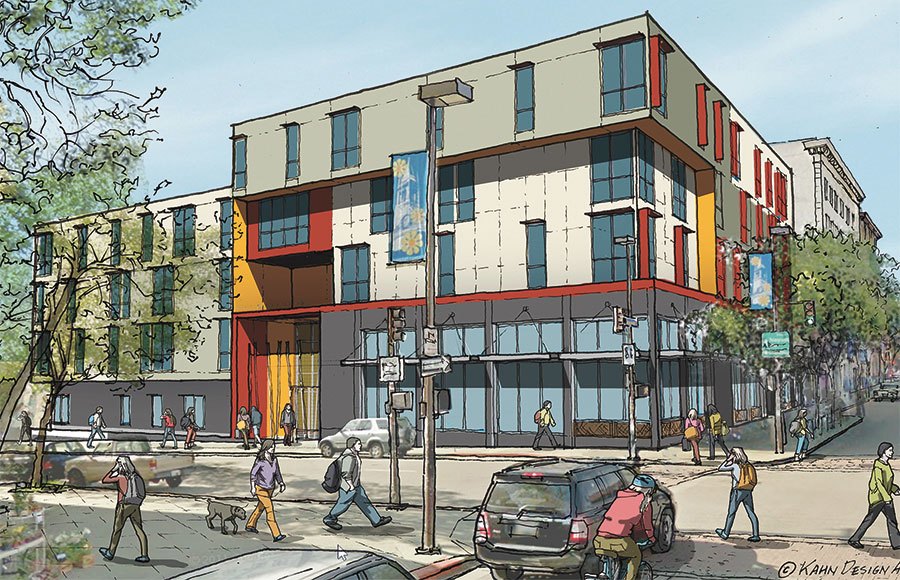
Housing policy is at the center of all of our major societal problems in the United States:
- Care about racial justice? Restrictive housing and land use policies are responsible for our deeply segregated towns and cities.
- Climate change? Bad housing policies are the reason why so many people are forced into long, emission-spewing commutes, because they can’t afford to live close to their jobs.
- Economic inequality? Inflated home prices and rents increasingly force middle- and low-income residents into low-opportunity areas, while shutting them out of the wealth-generating possibilities of home ownership. Just to name a few issues affected by housing.
So why can’t we address the high cost of housing, particularly near transit and jobs? There are two culprits: high-income homeowners who support exclusionary local land use policies that restrict housing supply, which prevents others from moving into their communities and deprives them of the educational and economic opportunities that come with living in these areas. Second, the state and federal government is unwilling to provide sufficient public subsidies for affordable housing (though the scale of the need at this point is simply massive, especially given the country’s inability to build housing at a reasonable price).
Perhaps with these dynamics in mind, then-Lieutenant Governor Gavin Newsom campaigned for governor in 2018, promising 3.5 million new housing units to address the state’s severe housing shortfall. But after two legislative sessions, the Governor so far has no meaningful legislative accomplishments on increasing housing production. Like 2019, this just-concluded 2020 legislative session proved to be a bust (yes, Covid-19 interfered, but housing was one of the few remaining priorities that the legislature was committed to addressing this year).
Here are the gory details of the housing bills from the original legislative “housing package” in January that did not survive:
Assembly defeats:
- AB 1279 (Bloom): would have identified high-resource areas with strong indicators of exclusionary patterns and require zoning overrides to encourage production of small-scale market-rate housing projects and larger-scale mixed-income affordable projects.
- AB 2323 (Friedman): would have expanded CEQA infill exemptions to projects in low-vehicle miles traveled (VMT) areas.
- AB 3040 (Chiu): would have incentivized cities to upzone to allow for fourplexes in neighborhoods currently zoned solely for single-family housing.
- AB 3107 (Bloom): would have allowed streamlined rezoning of commercial land for housing.
- AB 3279 (Friedman): would have amended administrative and judicial review for various projects under the California Environmental Quality Act (CEQA).
Senate defeats:
- SB 899 (Wiener): would have streamlined review for religious institutions seeking to build housing on their property.
- SB 902 (Wiener): would have streamlined approval for up to 10 housing units per parcel near transit.
- SB 995 (Atkins): would have fast-tracked CEQA review for environmentally beneficial infill projects.
- SB 1085 (Skinner): would have expanded density bonus law by allowing rental housing developers to increase the size of their projects 35% if at least 20% of the units were moderately priced (rent at 30% below market rate for the area).
- SB 1120 (Atkins): would have allowed two homes on every property zoned for single-family homes in California; would have also allowed single-family properties to be split into two lots.
- SB 1385 (Caballero): would have made it easier to rezone commercial land for housing and streamline approval for projects on that land.
- SB 1410 (Caballero): would have provided rental relief through tax credits to landlords to fill unpaid rent.
It’s also worth reiterating that the senate voted down in January an amended version of Senate Bill 50 (Wiener), which would have reduced local restrictions on apartments near major transit and jobs.
And strangely, SB 995, SB 1085, and SB 1120 all passed the Assembly at the last minute, but Assembly Speaker Anthony Rendon scheduled the vote too late for a concurrence vote in the Senate. As a result, the bills died.
But the news was not all bad. Some housing bills did pass, including:
- AB 725 (Wicks): requires that no more than 75 percent of a city’s regionally assigned above-moderate income housing quota can be accommodated by zoning exclusively for single-family homes, with the remainder on sites with at least 4 units.
- AB 1851 (Wicks): requires local governments to approve a faith-based organization’s request to build affordable housing on their lots and allows faith-based organizations to reduce or eliminate parking requirements.
- AB 2345 (Gonzalez): increases the density bonus and the number of incentives available for a qualifying housing project.
- SB 288 (Wiener): temporarily exempts from CEQA review infill projects like bike lanes, transit, bus-only lanes, EV charging, and local actions to reduce parking minimums, among others, until 2023 (disclosure: I helped Assemblymember Laura Friedman and Assembly Natural Resources Committee chief consultant Lawrence Lingbloom draft the parking provision, along with Mott Smith of the Council of Infill Builders).
So there we have it in 2020. A few successes, but mostly a wipeout. Perhaps recognizing the urgency after two failed sessions, Governor Newsom appeared this week to offer something of a belated endorsement of SB 50 and SB 1120, two of the more consequential bills that failed in the legislature this year:
But absent strong leadership from the Governor’s office and legislative leaders, this pattern of failure on housing production will likely continue, exacerbating all the challenges I discussed above that are affected by dysfunctional housing policy. That means we can expect worsening racial injustice and segregation, greenhouse gas emissions, and economic inequality, to name just a few, until the state can finally, meaningfully address this problem.

“Is it safe to take the bus?” That’s the question on people’s minds as we enter into the seventh month of the pandemic in the Bay Area. With ridership down, revenue across all Bay Area transit agencies has taken a huge hit that they may never recover from.
Join us on City Visions tonight at 6pm, as I host Jeffrey Tumlin, Director of the San Francisco Municipal Transit Agency (MUNI/SFMTA), to find out how MUNI is coping with all of these changes and planning for the future.
We’ll also hear from Paula Farmer, book buyer at Book Passage in Corte Madera, with her recommendations for books on racial justice, and we’ll get a Covid update from our experts Erin Allday, health reporter from the San Francisco Chronicle and Dr. Peter Chin-Hong, infectious disease specialist at the UCSF School of Medicine.
Call us during the show at 6pm with your questions at 866-798-TALK or send an email to cityvisions@kalw.org. We’re airing on 91.7 FM KALW in San Francisco and streaming live. Hope you can join us!

